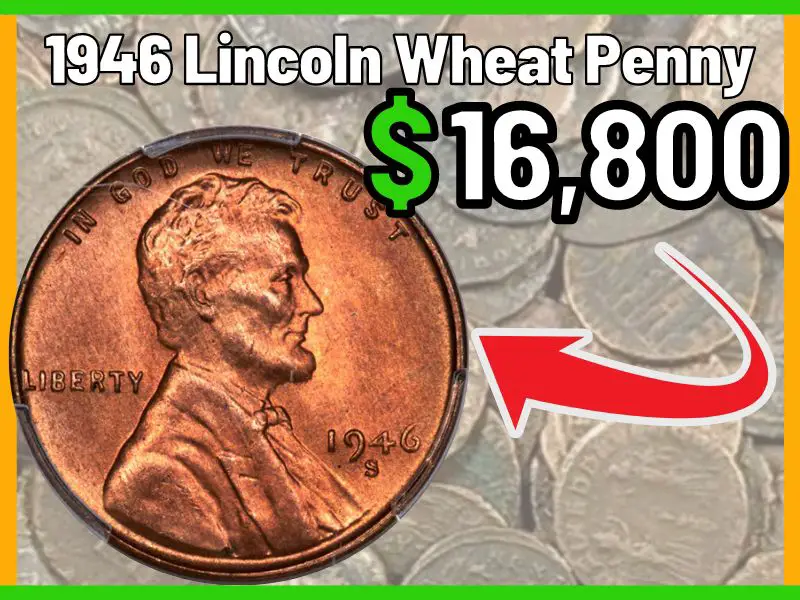
If you have a 1946 wheat penny, then you might be wondering how much it is worth. In circulated condition, these coins are only worth about 15 cents. However, if the coin is in pristine condition and has not been circulated, then it can be worth between $4 and $10. The most valuable variety of the 1946 wheat penny is the S over D mint mark error, which is worth about $616 in MS 65 grade.
Following the end of World War II, American troops began to return home, and demobilization led to a large-scale reduction in the size of the military. The country also experienced a wave of industrial strikes as workers sought to secure higher wages and improved working conditions. The baby boom began, and women began to enter the workforce in large numbers. In 1946, every penny was important!
Do you have a 1946 Wheat Penny in your pocket? If so, it might be worth a bit more than you think! In this blog post, we will talk about the value of a 1946 Wheat Penny and what factors influence its worth. So, if you’re curious about the value of your old penny, keep reading!
What is a Wheat Penny?
The Wheat Penny is an American coin with a long and storied history. Originally minted in 1909, the coin was struck in celebration of the 100th anniversary of Abraham Lincoln’s birth. The obverse of the coin features a portrait of Lincoln, while the reverse bears the likeness of two wheat ears. In 1918, the design was updated to include the words “In God We Trust,” and the coin continued to be minted until 1958.
Wheat Penny is a reminder of Lincoln’s humble beginnings. Born in a log cabin in Kentucky, Lincoln was raised in a family of farmers. He worked hard from a young age, helping to clear land and plant crops. When he was old enough, he began working as a surveyor, which helped him develop the skills that would later make him a successful lawyer. Lincoln’s connection to farming continued throughout his life; as president, he made several trips to visit farms and agricultural fairs. The Wheat Penny is a fitting tribute to a president who played an important role in shaping America’s identity as a nation of immigrants and frontier settlers.
In 1942, the government decreed that all pennies should be made of steel, as copper was needed for the war effort. As a result, wheat pennies minted between 1942 and 1945 are composed of steel with a thin coating of zinc. Today, Wheat Pennies are highly sought-after by collectors due to their age and historical significance. Thanks to their unique design, these coins are truly a piece of Americana.
1946 Wheat Penny Identification Guide
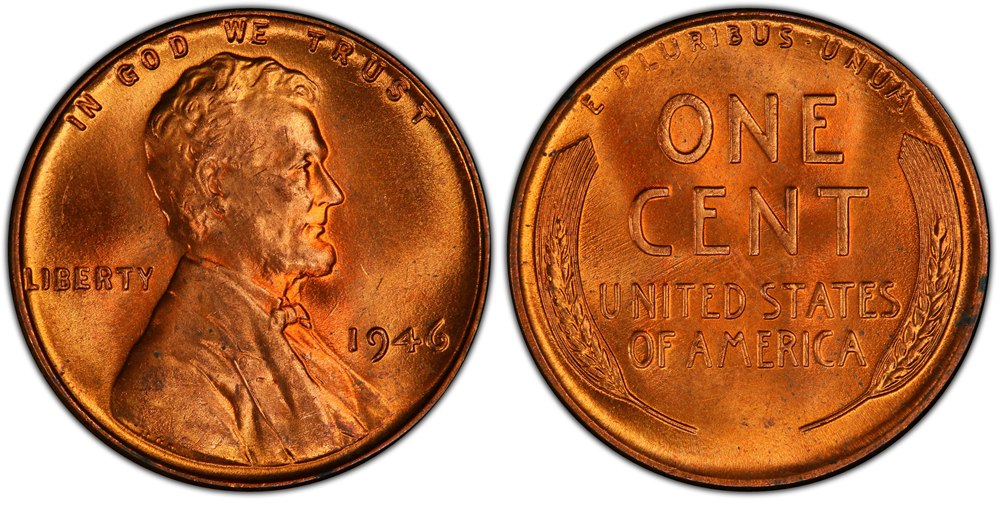
There are a few things to keep in mind when identifying a genuine Wheat Penny. First, look at the weight. A legitimate Wheat Penny should weigh 3.11 grams. Second, check the diameter. The coin should be 19.05 mm in diameter. Finally, take a look at the thickness; a Wheat Penny should be 1.52 mm thick. It’s also worth noting that genuine Wheat Pennies will contain copper mixtures from ammunition shells recovered from US military training grounds.
If you take a closer look at your 1946 wheat penny, you’ll notice that the obverse side features a profile bust of Abraham Lincoln’s head. The words “IN GOD WE TRUST”, “LIBERTY”, and the date of issue are also inscribed on the obverse. The reverse of the coin features two wheat stalks, symbolizing the nation’s agricultural heritage. There is also a Latin motto “E PLURIBUS UNUM”. Below the motto is the denominational value (one cent) and under that are the words “UNITED STATES OF AMERICA”.
One important thing to keep in mind when collecting wheat pennies is mint marks. Mint marks indicate where the coin was struck and can be found on the obverse, under the date. Coins without a mint mark were struck at the Philadelphia Mint, while those with an “S” were minted in San Francisco and those with a “D” were minted in Denver. While there are some exceptions, in general, coins from Philadelphia are the most common, followed by those from Denver.
Copper Penny Color Guide
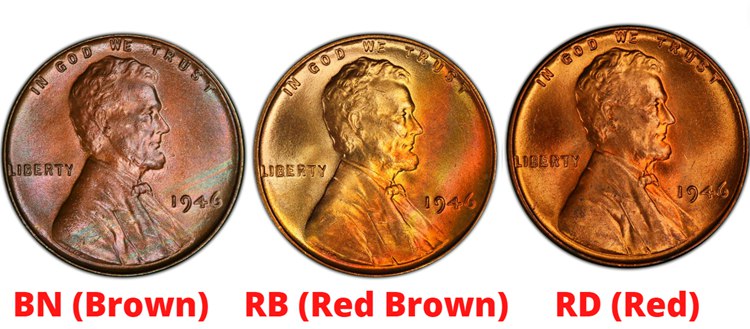
Have you ever found a copper penny and wondered what its color meant? If so, you’re not alone. Many people are curious about the different colors of copper pennies and what they signify. Here is a quick guide to help you determine the meaning of your copper penny’s color:
RD (Red): A copper penny that is red in color is usually indicative of a newer penny. Coins that have been in circulation for a longer period of time will typically develop a brown or red-brown patina.
RB (Red Brown): A red-brown copper penny is typically older than a penny that is simply red in color. This is because the brown patina develops over time as the coin is exposed to oxygen and other elements.
BN (Brown): A brown copper penny has been in circulation for an extended period of time and has developed a thick patina. This type of penny is less common than a red or red-brown penny, but it is still relatively easy to find.
How Rare is a 1946 Wheat Penny?
|
1946 Wheat Penny |
||
| Location | Year | Minted |
| Philadelphia | 1946 | 991,655,000 |
| Denver | 1946 D | 315,690,000 |
| San Francisco | 1946 S | 198,100,000 |
| San Francisco | 1946 S over D | unknown |
The Wheat Penny is an iconic coin that was produced from 1909-1958. In 1946, the Philadelphia, Denver, and San Francisco mints produced a combined 1.5 billion Wheat Pennies. That means that a 1946 Wheat Penny is not very rare. So, if you have a 1946 Wheat Penny, it’s not likely to be worth much more than face value. However, if you have a coin that is in pristine condition, it could be worth a bit more to collectors.
A total of 991,655,000 1946 pennies were struck at the Philadelphia Mint, and an additional 315,690,000 were produced at the Denver Mint. The San Francisco Mint also produced 198,100,000 of 1946 wheat pennies. However, there are some rare varieties that can be worth a lot more like 1946 S over D wheat penny, although the exact mintage is unknown.
What is a 1946 S over D Wheat Penny?
A 1946 S over D Wheat Penny is a penny that was minted in 1946 with an error. The error is that the “S” mintmark was stamped on top of a subtle “D” mint mark. This mint mark error is called an Overpunched Mintmark (OMM) error. It is unknown how many of these pennies were minted, but it is estimated that there are fewer than 100 of them in existence. So, if you come across a 1946 S over D Wheat Penny, you could be sitting on a small fortune!
How Much Is a 1946 Wheat Penny Worth
1946 was a busy year for the United States Mint. The end of World War II had led to a sharp increase in demand for coins, and the Philadelphia Mint was working around the clock to keep up with demand. As a result, 1946 1946 wheat penny no mint mark were produced in large numbers, and many of them entered circulation. Today, a 1946 wheat penny no mint mark in circulated condition is worth around 15 cents. However, if the coin is in mint state condition, it could be worth as much as $4 at auction.
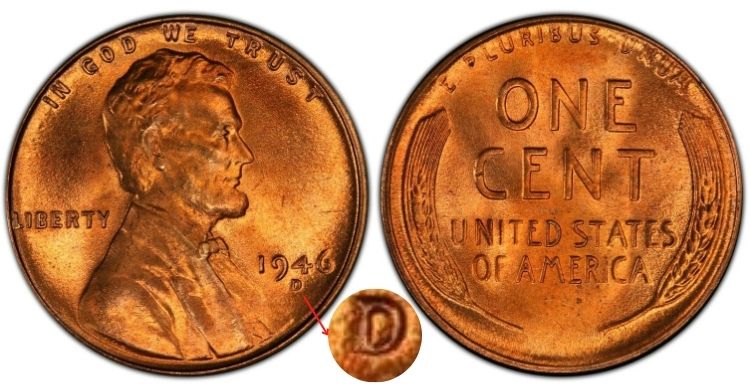
The price is similar for coins struck in the Denver mint. Circulated 1946 d wheat penny value is around 15 cents, but uncirculated certified MS grade 1946 D Wheat Pennies can be worth around $5.
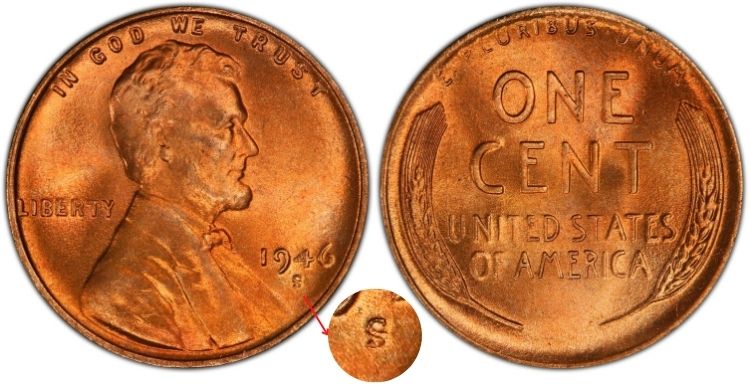
A 1946 S wheat penny in circulated condition is worth around 15 cents, while an uncirculated 1946 S wheat penny value coin can increase up to $6. The 1946 S wheat penny is also a relatively common coin, so it is not particularly valuable.
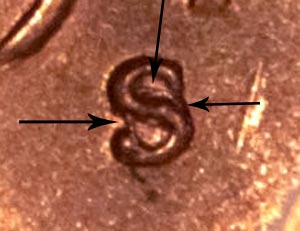
The most valuable variety is the S over D mint mark error (also known as the Overpunched Mintmark error), which can be worth up to $278 in MS 60 grade and $616 in MS 65 grade. Other varieties are worth significantly less, but a well-preserved coin can still fetch a decent price.
What is the Most Expensive 1946 Wheat Penny Ever Sold?
The most expensive 1946 wheat penny ever sold was graded MS67 Red by PCGS and sold for $14,950 in 2006. This coin is one of only 67 known to exist in this condition, making it extremely rare and valuable. The fiery-red surfaces of this coin are truly stunning, and it is no wonder that it fetched such a high price at auction.
In 2008, a well-struck and intensely lustrous 1946 Wheat Penny graded MS67 Red by PCGS sold for $8,625, making it the second most expensive 1946 Wheat Penny ever sold. The intense luster and rich color of this coin make it a true standout amongst 1946 Wheat Pennies. Despite its high price tag, this coin is certainly worthy of its place as one of the most valuable wheat pennies.
How Do I Know if My 1946 Penny Is Valuable?
Many people have old pennies sitting around that they don’t know what to do with. If you have a 1946 penny, you might be wondering if it is valuable. The first step is to compare your penny to recently sold items. Look at the condition of your penny and compare it to other 1946 pennies that have been sold. For example:
- A 1946 S Lincoln wheat penny graded MS 65 by PCGS sold for $9,50.
- A similar coin from San Francisco Mint only graded MS 66 sold for $10,50.
- A circulated 1946 Philadelphia penny sold for $0,99. Another similar penny sold for the same price.
- Uncirculated 1946 D Lincoln penny graded MS 66 RD sold for $36.
1946 Lincoln Wheat Penny Grading System
Coins are often graded on a scale from 1 to 70, with 70 being a perfect coin. The Sheldon scale is the most common grading system in use today, and it was developed by Dr. William Sheldon in 1949. The Sheldon scale uses a point system to grade a coin’s condition, with each point representing a specific level of wear or damage. For example:
- EF 40 – Extremely fine. The designs’ high points have some little wear, but overall sharpness is still very good.
- AU 50 – About uncirculated. Slight signs of wear on the coin’s high points; possible contact markings.
- MS 60 – Uncirculated coin with obvious flaws, usually an excessive amount of bagmarks, a bad strike, or low shine. Still better than the previous two grades.
- MS 63 – A grade of uncirculated coin that has fewer flaws than coins of lower grades.
- MS 66 – The surface and mint luster of a coin with an MS-66 grade are above average, and there are just three or four tiny or perceptible contact blemishes on the coin.
- PR 67 – There are no visible hairlines or scuffs. Coins made of copper have a rich original hue. Excellent visual appeal.
The highest grades are reserved for coins that have been professionally graded and certified by one of the major coin grading services.
5 Most Valuable 1946 Lincoln Wheat Penny Ever Sold
| 1946 Lincoln Wheat Penny | ||||
| No. | Type | Condition | Sold Date | Price |
| 1 | 1946-S 1C | MS67+ Red | Dec 15, 2022 | $16,800.00 |
| 2 | 1946 1C | MS67 Red | Jan 4, 2006 | $14,950.00 |
| 3 | 1946 1C | MS67 Red | May 4, 2005 | $10,350.00 |
| 4 | 1946 1C | MS67 Red | Dec 4, 2008 | $8,625.00 |
| 5 | 1946 1C | MS67 Red | Jan 8, 2014 | $7,167.50 |
1. 1946-S 1C MS67+ Red Sold on Dec 15, 2022 for: $16,800.00
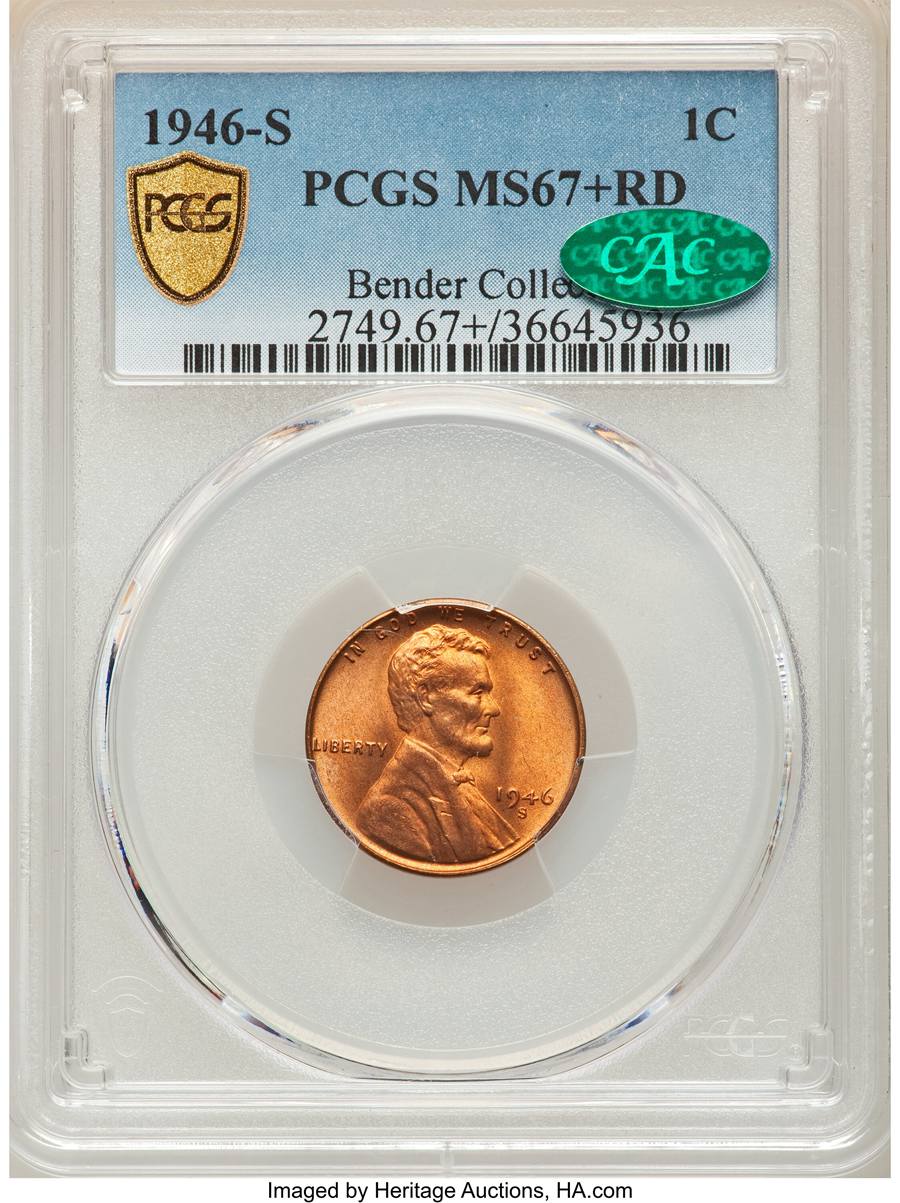
2. 1946 1C MS67 Red Sold on Jan 4, 2006 for: $14,950.00
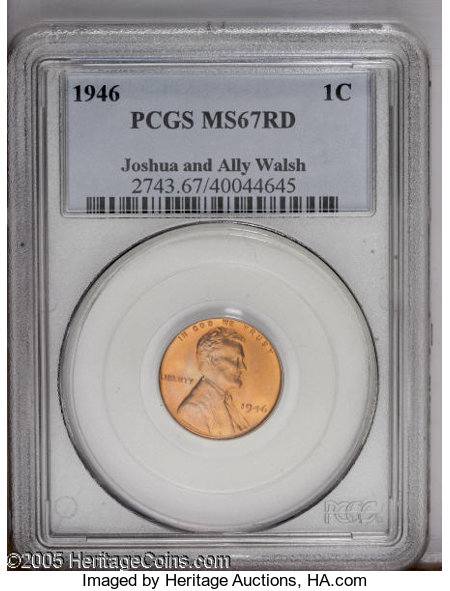
3. 1946 1C MS67 Red Sold on May 4, 2005 for: $10,350.00
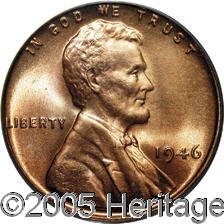
4. 1946 1C MS67 Red Sold on Dec 4, 2008 for: $8,625.00
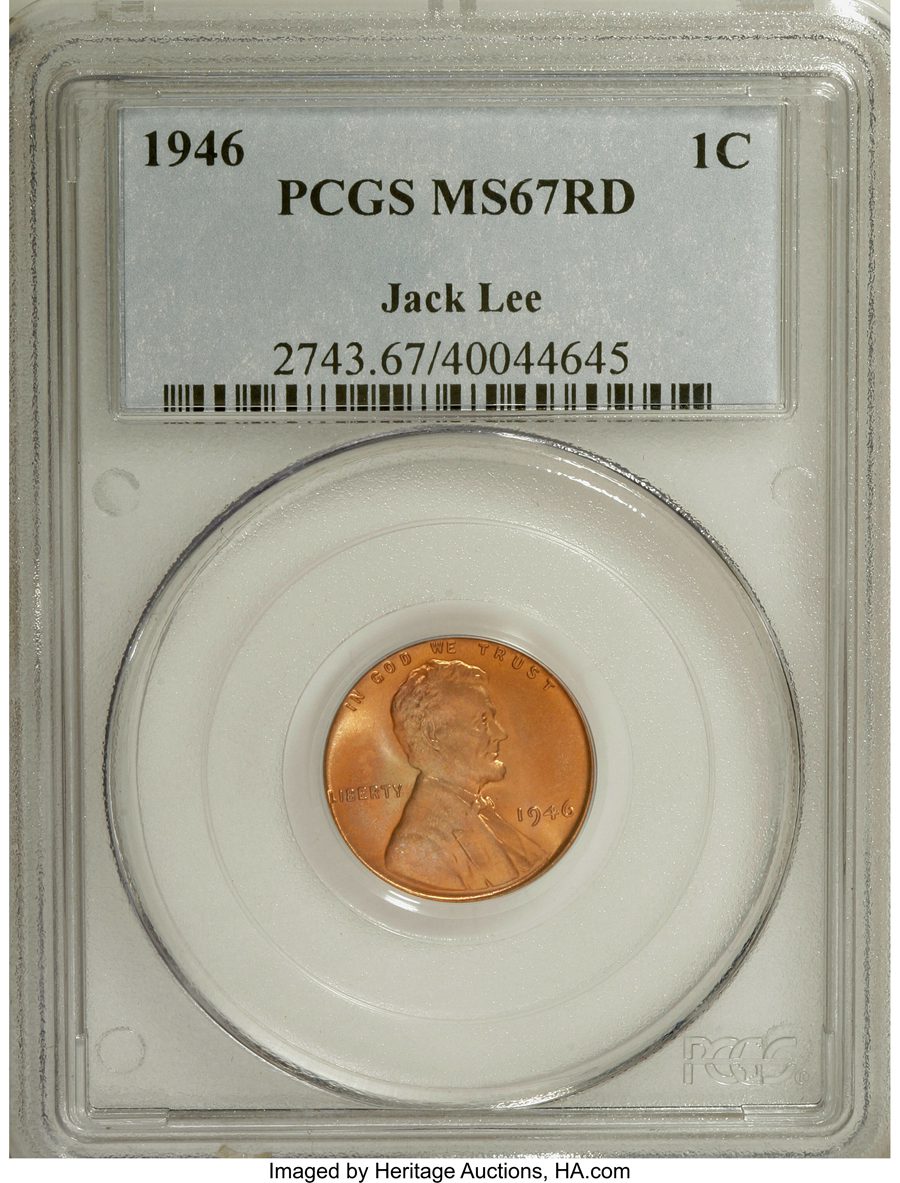
5. 1946 1C MS67 Red Sold on Jan 8, 2014 for: $7,167.50
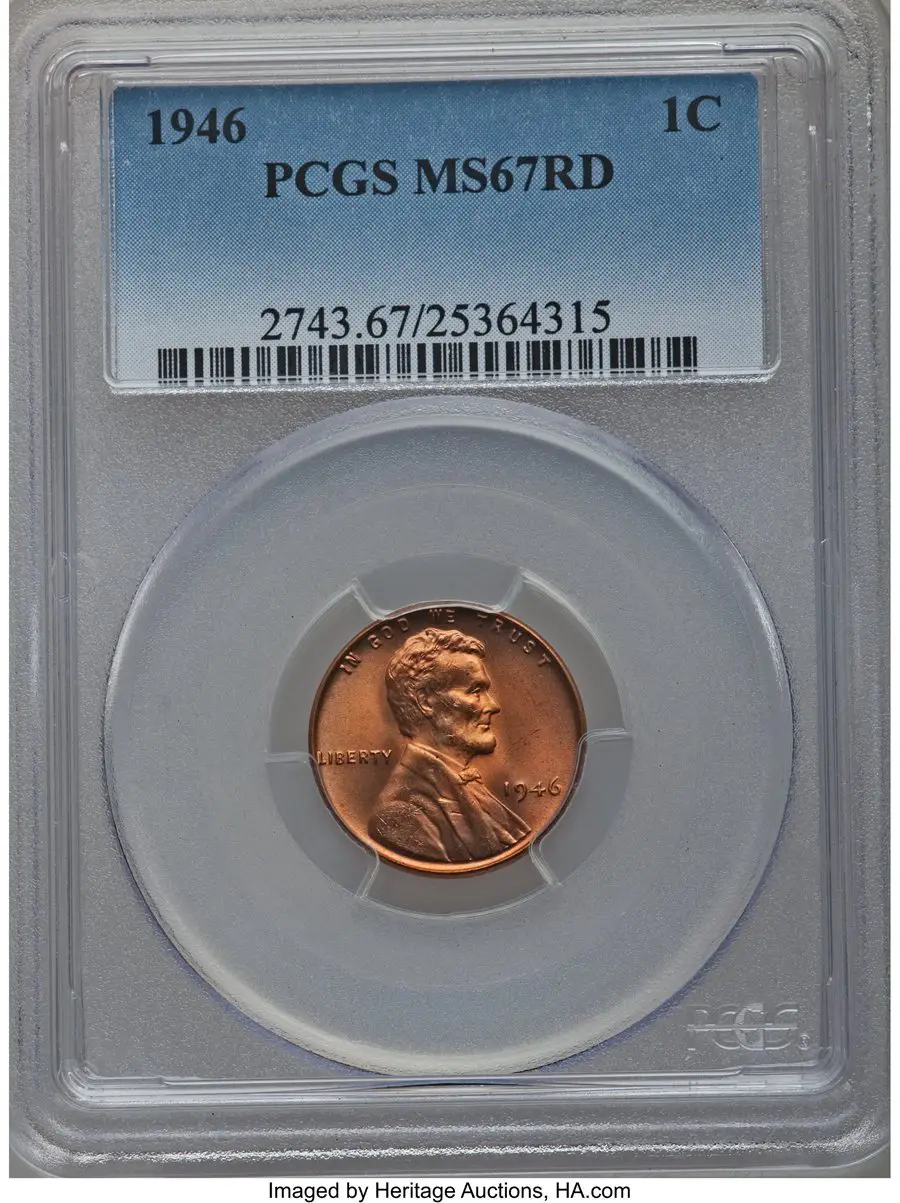
Final Thoughts
A wheat penny is a one-cent coin produced by the United States government in the late 19th and early 20th centuries. They were so called because their obverse design featured a depiction of a stalk of wheat. Wheat pennies were minted from 1909 to 1958, and they remain popular among collectors today. Many people are interested in knowing how much their wheat penny is worth. The answer, unfortunately, is not always simple.
In general, 1946 Lincoln wheat pennies that have been circulated (that is, used in commerce) are only worth about 15 cents. However, if the coin is in uncirculated condition, it can be worth anywhere from $4 to $10. There are also certain varieties of Lincoln cents that are more valuable than others. The most valuable variety is the S over D mint mark error, which is worth $616 in MS 65 grade. However, even non-error wheat pennies can be valuable if they are in excellent condition. If you think you might have a valuable wheat penny, it’s always best to have it appraised by a professional numismatist.
